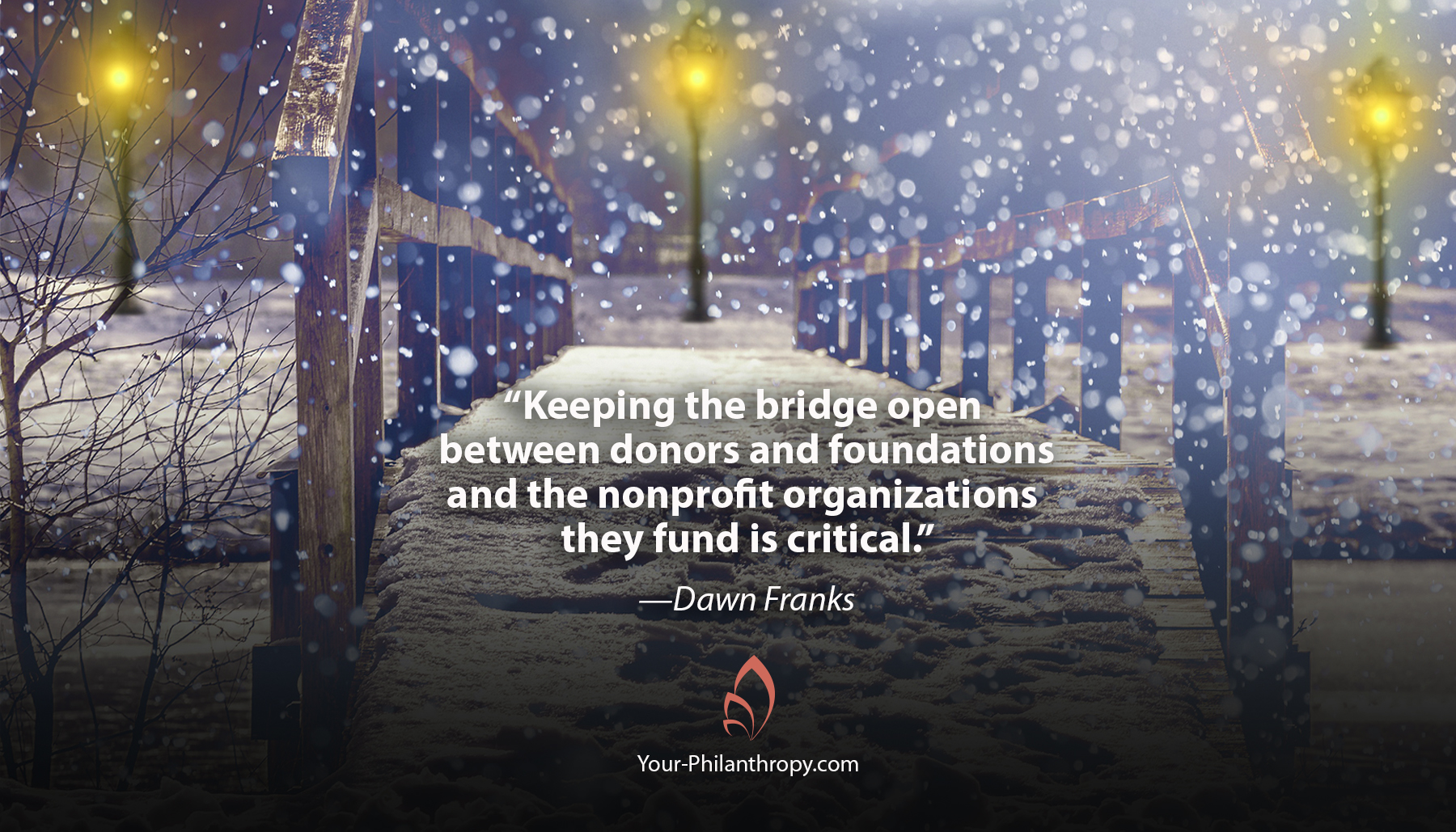The world of private philanthropy is often an enigma in the eyes of nonprofit leaders. We create confusion and frustration for nonprofit organizations. We are a puzzle. We speak in riddles and leave breadcrumb trails of paradox. Nonprofit staff spends countless hours in workshops and conferences seeking a better understanding of private foundations and major donors.
Perhaps you are familiar with the Indian parable of the blind men and the elephant. When nonprofit leaders describe major donors, it’s as if they’re standing blindfolded at different ends of the elephant. One feels the big, strong trunk and the other a hard, skinny tail. The elephant trunk can be a feeding utensil, picking up flowers and huge logs. The tail, on the other hand, serves as a capable fly swatter. One moment the elephant is giving and helpful; the next, it’s swatting the nonprofit away.
My more than 35 years of experience working with nonprofits and donors has shown me that donors have a definite blind spot about giving relationships. It is clear from the Center for Effective Philanthropy’s new research report, Crucial Donors: How Major Individual Givers Can Best Support Nonprofits, that nonprofits understand the importance of building relationships with major donors. But they can’t build those relationships alone.
The challenges are even greater when a donor gives from multiple pockets. What do I mean by pockets? Donors may at the same time, for example, serve on a foundation board, make donor-advised gifts from a community foundation, write event sponsorship checks from a corporate account, and make memorial gifts and donations from personal checking accounts. It’s no surprise that nonprofits struggle to understand the donor relationship and its accompanying expectations when there are so many different factors at play.
Many years back, I was on the phone with Patty, a nonprofit executive director who had just received news of a large gift to a nearby hospital, and was now in the dilemma of whether to submit a grant application to the foundation of the family that had just made the large gift. “Well sadly, I guess there’s not much reason to submit a grant proposal this year to the foundation,” she said to me. Perplexed, I told her she should, of course, submit an application again since the foundation had been supportive of her organization for years.
Insistent that she had done her homework, Patty went on to explain that she had been looking at the foundation’s most recent 990 on GuideStar, and it appeared they had just given all its assets away to the hospital.
“Oh, no,” I replied quickly, “You should submit the grant.” I went on to explain that the family had more than one giving pocket. After some silence, she said, “You mean they have so much money that they can put $18 million dollars into a foundation and still write a personal check for $18 million dollars?” I assured her they could. As we ended our call, I encouraged her to get busy writing the grant proposal.
Thanks to the confidence Patty had to reach out and inquire about how that major gift might affect her organization, she avoided the mistake of making a decision about where to seek funding based on assumptions.
Several times I have also handled calls from nonprofit staff seeking information about how to ask a foundation for another gift even though the check they received had come from a donor-advised fund. I know they were frequently more confused as I tried to explain the many different giving pockets that donors can possess — and how those funds can be accessible to nonprofits.
I view the work of Your Philanthropy as bridge building and maintenance. Keeping the bridge open between donors and foundations and the nonprofit organizations they fund is critical. Effective grantmaking and communication about the successes and failures of nonprofit goals and strategies depend on it. An open bridge also requires that nonprofit organizations understand donors’ giving pockets, and more often than not, this is something that requires explaining.
It is up to donors and funders of all types to help nonprofits understand the breadth and complexity of their giving if we are to forge better relationships and find better paths to effective giving and greater impact.
Like it? Use it. Share it. Comment below.


This one really resonated with me. It is something I have learned from you in the past, but need to be reminded of…thank you for writing it.
Great information! Having been on both sides of the donor-nonprofit equation, I have personally observed the multiple pocket player in action. A major donor who supports your nonprofit’s mission from their heart will find a way to provide the funds required or personally help you find donors who can. In the end it’s all about the mission, not the money.